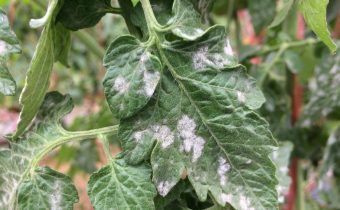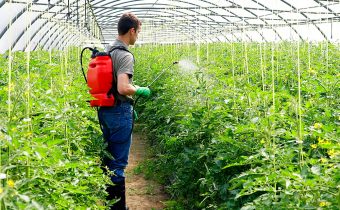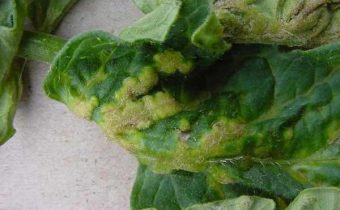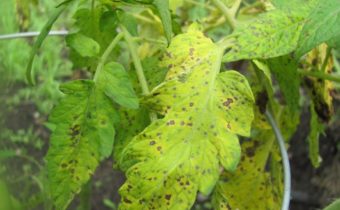Tomato "Chernomor": an exquisite variety with a lot of advantages
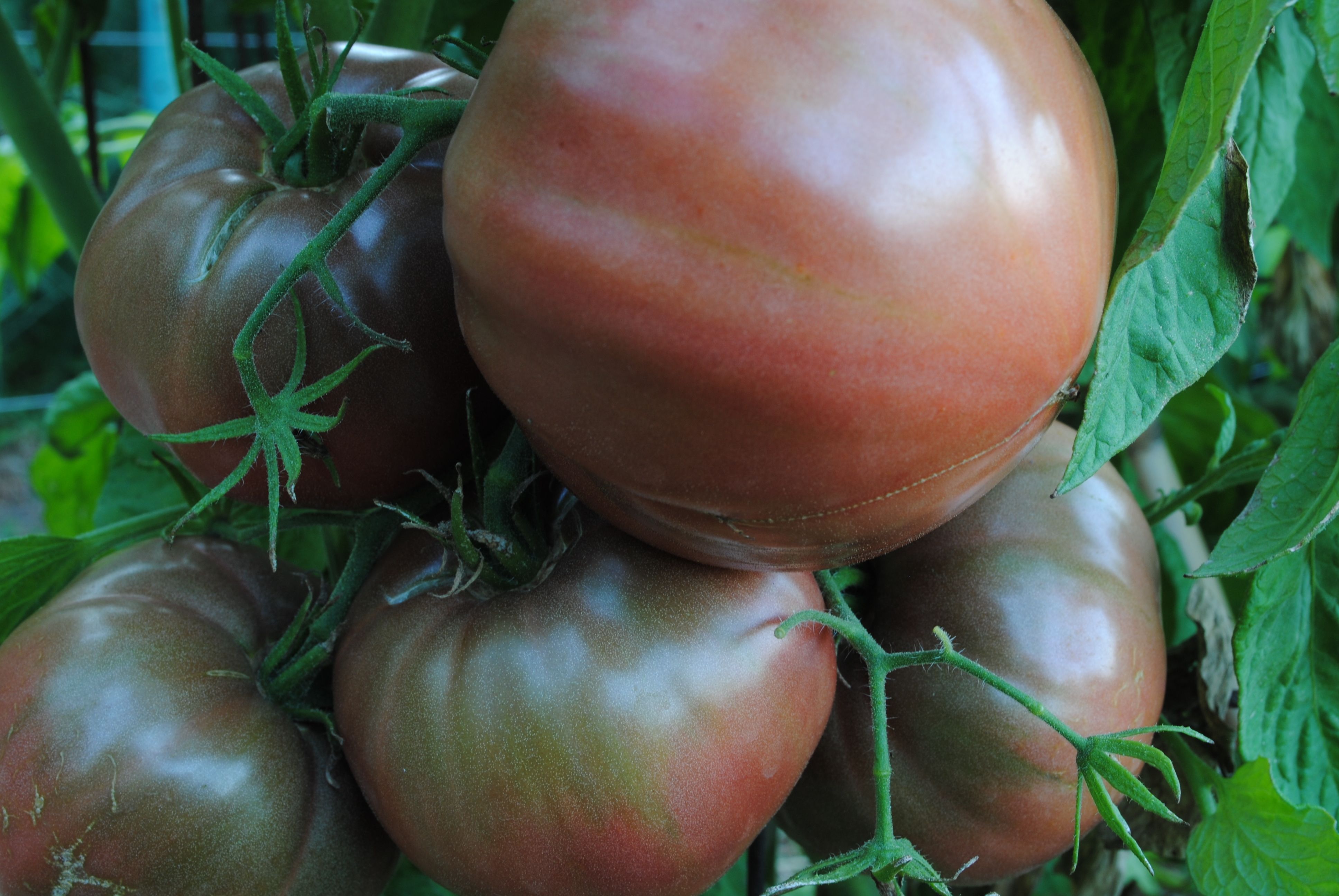
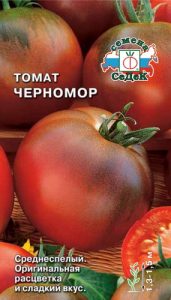 A new series of black, so-called anthocyanin tomatoes, will interest many lovers not only with their original appearance, but also with their unusually useful, I can even say healing properties.
A new series of black, so-called anthocyanin tomatoes, will interest many lovers not only with their original appearance, but also with their unusually useful, I can even say healing properties.
Black and brown tomatoes acquire their color due to the presence of anthocyanins in them - plant pigments that are found in many other purple fruits, for example, eggplants, blueberries. These pigments can get to tomatoes due to natural selection or by means of genetic engineering.
One of the most popular varieties of such tomato growers is the Chernomor tomato. These are mid-season tomatoes with a maturity of 110-120 days from the moment of emergence to the first ripe fruit. The variety is semi-determinant, suitable for cultivation in open ground, greenhouses, under the film.
Basic information about the variety
The plant forms quite powerful bushes with a height of about 1.5 m. Bush requires the formation of 2-3 stalks and obligatory garters to the support. The leaves are like potato green.
The fruits of tomato have the following features:

- The color is dark purple.
- The shape of the fruit is flat-round, slightly ribbed.
- Tomato weight - 160-180 g. Maximum weight - up to 300g.
- Resistant to cracking.
- The flesh is fleshy and juicy.
- Due to the high content of sugars it has a peculiar taste.
- Used for salads, for preservation in the form of various sauces and ketchups.
- Well kept and resistant to transportation.
See also: Tomato "French Mardin": a popular variety among amateurs and professionals
The advantages and disadvantages of the variety
Main advantages:

- The grade attracts with a peculiar type of large fine fruits with remarkable taste.
- Can be planted in greenhouses and garden beds.
- Tomatoes have healing properties due to antioxidants that help cleanse the body.
- A high content of vitamin A has a positive effect on vision.
- Lycopene protects against the formation of tumors.
- A large number of anthocyanins strengthens the immune system and improves the functioning of blood vessels.
The disadvantages include:
- Susceptibility to late blight.
- Mandatory staving and thinning of the bushes.
- Requirements for soil composition and care.
Features of tomato agrotechnics
For a healthy and high-quality crop of tomatoes, seedlings must be strong and healthy. Seeds before sowing must be treated with potassium permanganate solution and any growth stimulant.
Land for seedlings is prepared in advance, better in the fall. It should be light and breathable. For its preparation, mixed garden soil, taken from the beds, on which neither potatoes, nor tomatoes, compost, or ash had previously grown, is mixed. If the garden soil has a clay structure, sand or peat are added to the composition.
See also: Methods of dealing with the apical rot of tomatoes
Sowing seeds for growing tomatoes in greenhouses start in the first decade of March, for open ground seeds are sown two to three weeks later.
Tomato seeds are sown in moist soil at a distance of 1.5 -2 cm from each other, covered with a layer of earth (about 5 mm) and slightly compacted from above with my hands.
The temperature regime in the room in the first week after germination is maintained at night of 12-13 degrees, in the daytime 15-16 degrees. for hardening seedlings. In the following weeks, the temperature is gradually increased by 5 degrees. Seedlings throughout this period must be watered very carefully.
 As soon as real leaves appear, tomatoes dive into pots or other larger boxes, the distance between plants increases in them to 20-25 cm. Fertilizing with fertilizer for seedlings can be carried out a week after transplantation.
As soon as real leaves appear, tomatoes dive into pots or other larger boxes, the distance between plants increases in them to 20-25 cm. Fertilizing with fertilizer for seedlings can be carried out a week after transplantation.
The soil for planting tomatoes in the beds and in the greenhouse is prepared in advance: in the fall, lime or dolomite flour is added, sidderats are sown. The wells for planting seedlings make at a distance of 40 cm between the plants and 60 cm between the rows, they make compost, ash, mineral fertilizers.
Immediately before disembarking, the wells are watered, the seedlings are planted, on sunny days they are covered from the sun.
In the future, care for plants includes:
- Watering once in 7-10 days.
- Weeding, loosening.
- Fertilizer fertilizer every 2-3 weeks.
- Garter bushes to supports or trellis.
- Masking, thinning leaves when thickened.
- Top dressing with green manure (10% solution of mullein grass).
- Control over the appearance of plants.
When growing Chernomor tomatoes in a greenhouse, pay attention to the following:

- The variety has a high sensitivity to high humidity, so watering must be carried out either under the root, or using a drip irrigation system.
- To reduce the humidity of the air, it is recommended to use soil mulching with grass, cardboard or other auxiliary material. Mulching will also help you in weed control.
- Be sure to ventilate the greenhouses with vents or doors, while it is undesirable to create drafts.
- In a greenhouse, it is necessary to take a more resolute approach to trimming leaves and stepsons.
See also: Self-harvesting tomato seeds
Diseases and pests
According to reviews of vegetable growers, the Chernom class of tomato is sensitive to such tomato ailment as late blight. Airing of greenhouses, timely staining of plants, adjustable soil moisture will help to avoid the disease. For the prevention of diseases using phytosporin or other antifungal drugs. Recommend prophylactic treatment of plants with copper preparations.
 Since plants are demanding on the nutrient composition of the soil, it is necessary to constantly monitor the appearance of the plants. This will allow you to determine whether the plant needs additional feeding and what content:
Since plants are demanding on the nutrient composition of the soil, it is necessary to constantly monitor the appearance of the plants. This will allow you to determine whether the plant needs additional feeding and what content:
- So with a lack of potassium, the old leaves turn yellow, and the new ones roll up.
- With a deficiency of phosphorus leaves get purple hue and twist inside.
- With a shortage of copper in the soil, the leaves curl into tubes, the plant sheds leaves and does not form ovaries.
Top-dressing with appropriate micronutrients will help you grow a healthy and disease-resistant plant.
The popularity of black-colored tomatoes has recently grown thanks to new varieties with excellent taste and healing properties, which have a beneficial effect on the health of children and adults.
Video: Caring for tomatoes. First important steps


